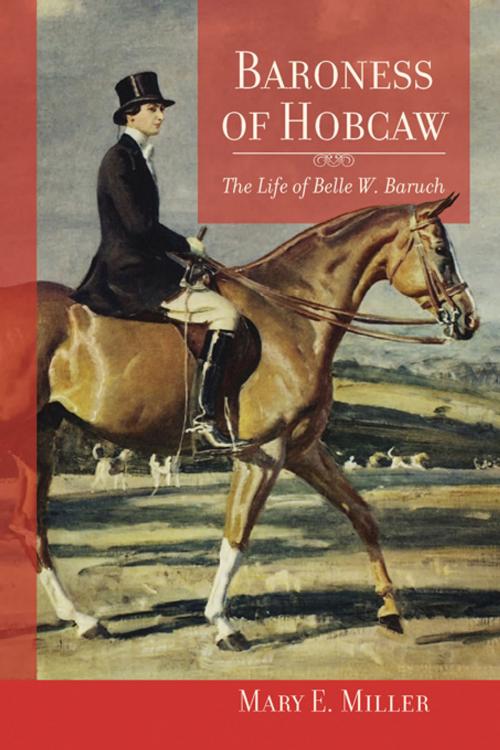| Author: | Mary E. Miller | ISBN: | 9781611172119 |
| Publisher: | University of South Carolina Press | Publication: | October 15, 2012 |
| Imprint: | University of South Carolina Press | Language: | English |
| Author: | Mary E. Miller |
| ISBN: | 9781611172119 |
| Publisher: | University of South Carolina Press |
| Publication: | October 15, 2012 |
| Imprint: | University of South Carolina Press |
| Language: | English |
Belle W. Baruch (1899–1964) could outride, outshoot, outhunt, and outsail most of the young men of her elite social circle—abilities that distanced her from other debutantes of 1917. Unapologetic for her athleticism and interests in traditionally masculine pursuits, Baruch towered above male and female counterparts in height and daring. While she is known today for the wildlife conservation and biological research center on the South Carolina coast that bears her family name, Belle's story is a rich narrative about one nonconformist's ties to the land. In Baroness of Hobcaw, Mary E. Miller provides a provocative portrait of this unorthodox woman who gave a gift of monumental importance to the scientific community. Belle's father, Bernard M. Baruch, the so-called Wolf of Wall Street, held sway over the financial and diplomatic world of the early twentieth century and served as an adviser to seven U.S. presidents. In 1905 he bought Hobcaw Barony, a sprawling seaside retreat where he entertained the likes of Churchill and FDR. Belle's daily life at Hobcaw reflects the world of wealthy northerners, including the Vanderbilts and Luces, who bought tracts of southern acreage. Miller details Belle's exploits—fox hunting at Hobcaw, show jumping at Deauville, flying her own plane, traveling with Edith Bolling Wilson, and patrolling the South Carolina beach for spies during World War II. Belle's story also reveals her efforts to win her mother's approval and her father's attention, as well as her unraveling relationships with friends, family, employees, and lovers—both male and female. Miller describes Belle's final success in saving Hobcaw from development as the overarching triumph of a tempestuous life.
Belle W. Baruch (1899–1964) could outride, outshoot, outhunt, and outsail most of the young men of her elite social circle—abilities that distanced her from other debutantes of 1917. Unapologetic for her athleticism and interests in traditionally masculine pursuits, Baruch towered above male and female counterparts in height and daring. While she is known today for the wildlife conservation and biological research center on the South Carolina coast that bears her family name, Belle's story is a rich narrative about one nonconformist's ties to the land. In Baroness of Hobcaw, Mary E. Miller provides a provocative portrait of this unorthodox woman who gave a gift of monumental importance to the scientific community. Belle's father, Bernard M. Baruch, the so-called Wolf of Wall Street, held sway over the financial and diplomatic world of the early twentieth century and served as an adviser to seven U.S. presidents. In 1905 he bought Hobcaw Barony, a sprawling seaside retreat where he entertained the likes of Churchill and FDR. Belle's daily life at Hobcaw reflects the world of wealthy northerners, including the Vanderbilts and Luces, who bought tracts of southern acreage. Miller details Belle's exploits—fox hunting at Hobcaw, show jumping at Deauville, flying her own plane, traveling with Edith Bolling Wilson, and patrolling the South Carolina beach for spies during World War II. Belle's story also reveals her efforts to win her mother's approval and her father's attention, as well as her unraveling relationships with friends, family, employees, and lovers—both male and female. Miller describes Belle's final success in saving Hobcaw from development as the overarching triumph of a tempestuous life.















